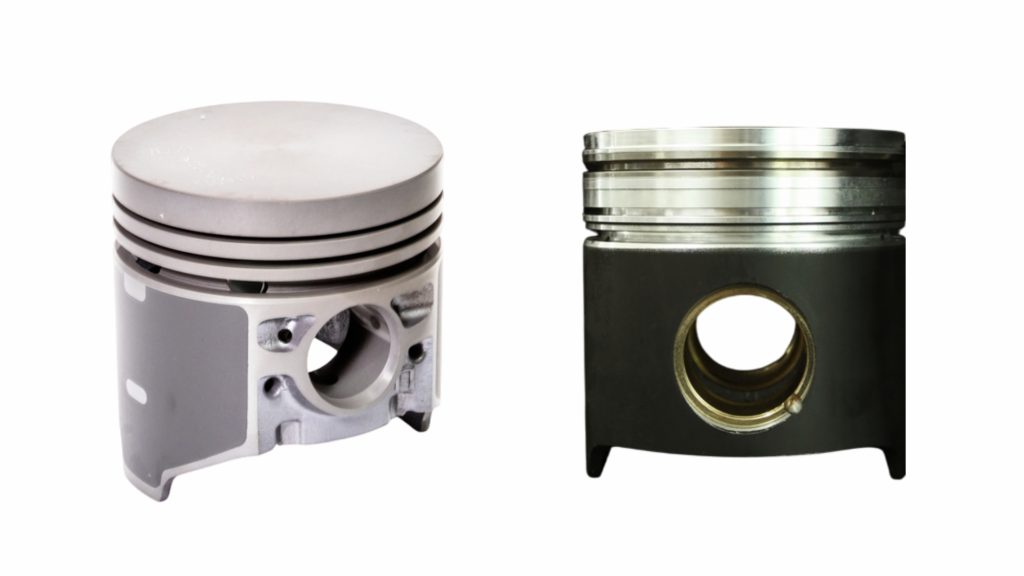
Pistons are a crucial component of internal combustion engines, converting fuel combustion into mechanical motion. This vital role underscores the importance of selecting the right materials for their construction, as the performance of the entire engine can hinge on this decision. The choice of piston material significantly impacts engine performance, durability, and efficiency. Therefore, understanding the material properties and how they affect engine dynamics is essential for anyone involved in engine design or maintenance.
The two most commonly used materials for pistons are aluminium and steel. Each has its own advantages and disadvantages, making them suitable for different applications. For instance, aluminium pistons are often favoured for their lightweight nature, which can lead to improved acceleration and fuel efficiency. On the other hand, steel pistons are known for their strength and durability, making them ideal for high-performance engines that operate under extreme conditions.
Aluminium Pistons
Aluminium pistons are the most widely used in automotive engines, especially in passenger vehicles. They are favored for their lightweight properties and excellent heat dissipation, which contribute significantly to overall engine performance. As the automotive industry continues to prioritize efficiency and performance, aluminium pistons have become the material of choice for many manufacturers.
Pros of Aluminum Pistons:
- Lightweight – One of the most compelling advantages of aluminum is its significantly lighter weight compared to steel. This reduction in reciprocating mass not only enhances engine efficiency but also contributes to improved fuel economy. Consequently, vehicles equipped with aluminum pistons can achieve greater power output without compromising on weight.
- Better Heat Dissipation – Another crucial benefit of aluminum is its superior ability to conduct heat. This characteristic enables aluminum pistons to dissipate heat more efficiently, thereby reducing the risk of overheating. Moreover, effective thermal management plays a vital role in maintaining engine performance and longevity, ensuring that vehicles remain reliable under various driving conditions.
- Lower Manufacturing Cost – The manufacturing process for aluminum pistons is not only simpler but also more economical compared to that of other materials like steel. This lower production cost translates into significant savings for manufacturers, making aluminum pistons an attractive option for mass production. As a result, consumers benefit from reduced vehicle prices without sacrificing quality or performance
- Faster Engine Response – The lighter weight of aluminum pistons leads to quicker acceleration and smoother operation. This responsiveness is particularly advantageous in high-performance applications where quick throttle response is desired. Furthermore, the agility afforded by aluminum pistons enhances the overall driving experience, making vehicles more enjoyable to operate.
Cons of Aluminum Pistons:
- Lower Strength – Aluminum is not as strong as steel and can wear out faster under extreme pressure. This inherent weakness makes aluminum less suitable for applications where structural integrity is crucial, especially in high-stress environments. As a result, engineers often have to consider alternative materials or design modifications to ensure safety and reliability.
- Higher Thermal Expansion – Aluminum expands more under heat, which can lead to tight clearances and potential engine issues. This characteristic poses a significant challenge in maintaining optimal performance, as the increased expansion can compromise the fit between components. Consequently, careful consideration must be given to tolerances in engine design to accommodate this expansion and prevent potential failures.
- Shorter Lifespan in High-Performance Applications – In high-horsepower or turbocharged engines, aluminum pistons may degrade faster due to intense stress and heat. This accelerated wear can result in costly repairs and decreased performance, prompting many manufacturers to explore more durable alternatives. Ultimately, while aluminum offers benefits in terms of weight reduction and cost-effectiveness, its limitations in high-performance scenarios necessitate a balanced approach in material selection.
Steel Pistons
Steel pistons are commonly used in heavy-duty applications such as diesel engines, racing engines, and high-performance vehicles. Their strength and durability make them ideal for extreme conditions.
Pros of Steel Pistons:
- Higher Strength and Durability – Steel is much stronger than aluminum, making it ideal for high-compression and high-boost applications. This inherent strength allows steel pistons to endure the intense forces generated within high-performance engines, ensuring reliability even under extreme conditions.
- Lower Thermal Expansion – In addition to its strength, steel also exhibits lower thermal expansion compared to aluminum. This characteristic means that steel expands less under heat, ensuring more stable engine performance and tighter tolerances. As a result, engine components maintain their alignment and functionality, which is crucial for optimal performance and longevity.
- Longer Lifespan – Furthermore, steel pistons can withstand more cycles of high stress, making them more durable in extreme conditions. This durability translates to a longer lifespan for the engine, reducing the need for frequent replacements and maintenance. Consequently, this not only enhances the reliability of the vehicle but also contributes to cost savings over time.
- Better Fuel Efficiency in Diesel Engines – Moreover, due to their strength, steel pistons enable higher compression ratios, improving fuel efficiency. This improvement is particularly significant in diesel engines, where enhanced compression translates to more efficient combustion. As a result, drivers can enjoy better fuel economy without sacrificing power, making steel pistons an attractive choice for those seeking both performance and efficiency.
Cons of Steel Pistons:
- Heavier Weight –Steel pistons are significantly heavier than aluminum, which can affect engine responsiveness and efficiency. This increased weight can lead to a reduction in the overall performance of the engine, as it may require more energy to achieve the same level of output. Consequently, the added mass can hinder acceleration and responsiveness, making the engine feel slower and less agile during operation..
- Lower Heat Dissipation – Steel does not conduct heat as efficiently as aluminum, which may require additional cooling mechanisms. This limitation in heat dissipation can lead to higher operating temperatures within the engine, potentially causing thermal stress and impacting the longevity of engine components. As a result, manufacturers might need to implement more complex cooling systems, adding both weight and complexity to the engine design.
- Higher Cost – Steel pistons are more expensive to manufacture and process, making them less common in standard production cars. This increased cost is not only associated with the raw materials but also with the additional machining and processing required to achieve the desired specifications. Consequently, this financial factor often leads automakers to favour aluminum pistons for their cost-effectiveness, especially in mass-market vehicles, thereby limiting the use of steel pistons to high-performance or specialized applications.
Which Piston Material is Right for You?
- For standard passenger vehicles and performance cars – Aluminum pistons are generally the best choice due to their lightweight nature, cost-effectiveness, and good heat dissipation.
- For high-performance, turbocharged, or diesel engines – Steel pistons are better suited due to their superior strength, durability, and resistance to high pressures.
Conclusion
Choosing between aluminum and steel pistons depends on the intended application. While aluminum pistons are excellent for everyday driving and fuel efficiency, steel pistons shine in high-stress environments where durability and performance are crucial. Understanding the strengths and weaknesses of each material helps ensure the best choice for your engine’s needs.


